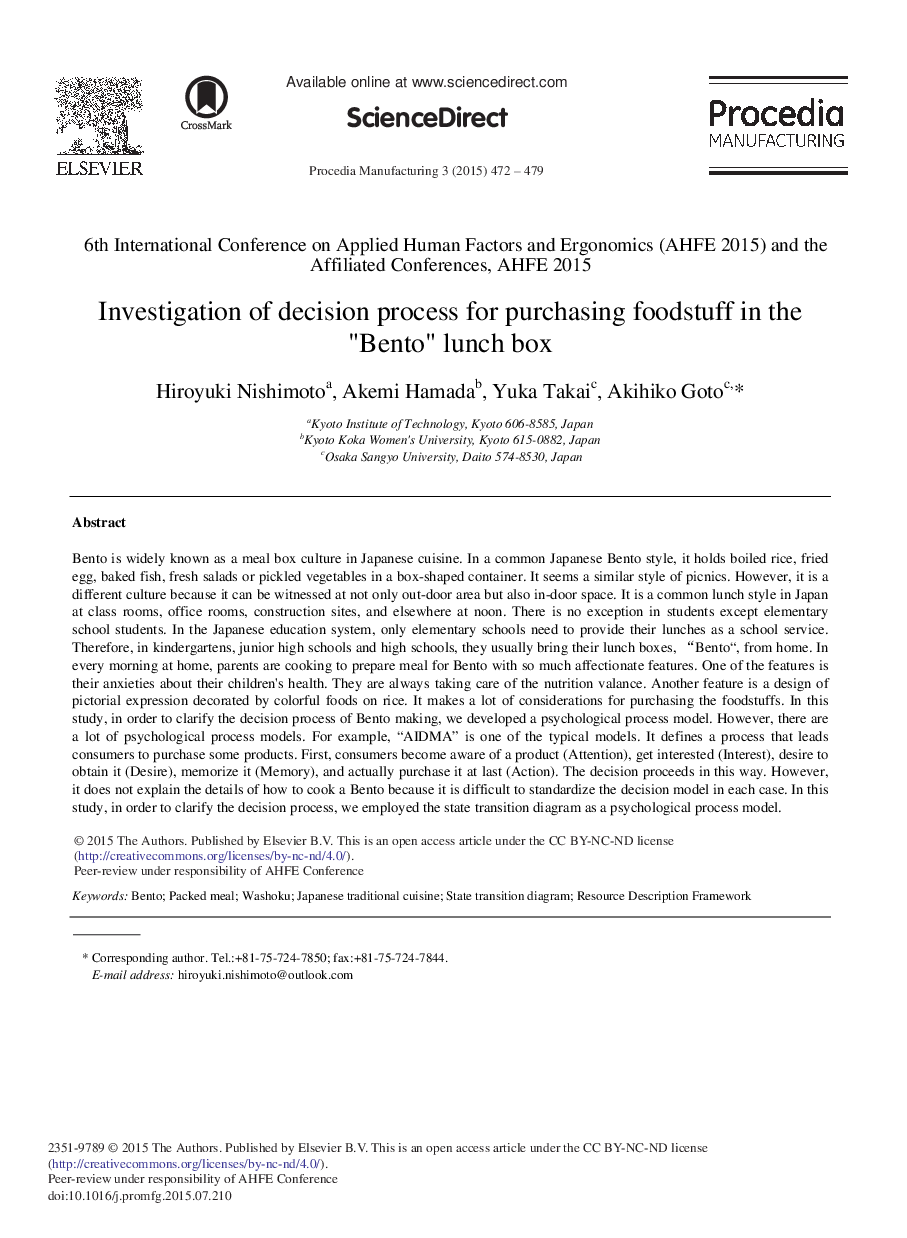| Article ID | Journal | Published Year | Pages | File Type |
|---|---|---|---|---|
| 1143824 | Procedia Manufacturing | 2015 | 8 Pages |
Bento is widely known as a meal box culture in Japanese cuisine. In a common Japanese Bento style, it holds boiled rice, fried egg, baked fish, fresh salads or pickled vegetables in a box-shaped container. It seems a similar style of picnics. However, it is a different culture because it can be witnessed at not only out-door area but also in-door space. It is a common lunch style in Japan at class rooms, office rooms, construction sites, and elsewhere at noon. There is no exception in students except elementary school students. In the Japanese education system, only elementary schools need to provide their lunches as a school service. Therefore, in kindergartens, junior high schools and high schools, they usually bring their lunch boxes, “Bento“,1 from home. In every morning at home, parents are cooking to prepare meal for Bento with so much affectionate features. One of the features is their anxieties about their children's health. They are always taking care of the nutrition valance. Another feature is a design of pictorial expression decorated by colorful foods on rice. It makes a lot of considerations for purchasing the foodstuffs. In this study, in order to clarify the decision process of Bento making, we developed a psychological process model. However, there are a lot of psychological process models. For example, “AIDMA” is one of the typical models. It defines a process that leads consumers to purchase some products. First, consumers become aware of a product (Attention), get interested (Interest), desire to obtain it (Desire), memorize it (Memory), and actually purchase it at last (Action). The decision proceeds in this way. However, it does not explain the details of how to cook a Bento because it is difficult to standardize the decision model in each case. In this study, in order to clarify the decision process, we employed the state transition diagram as a psychological process model.
